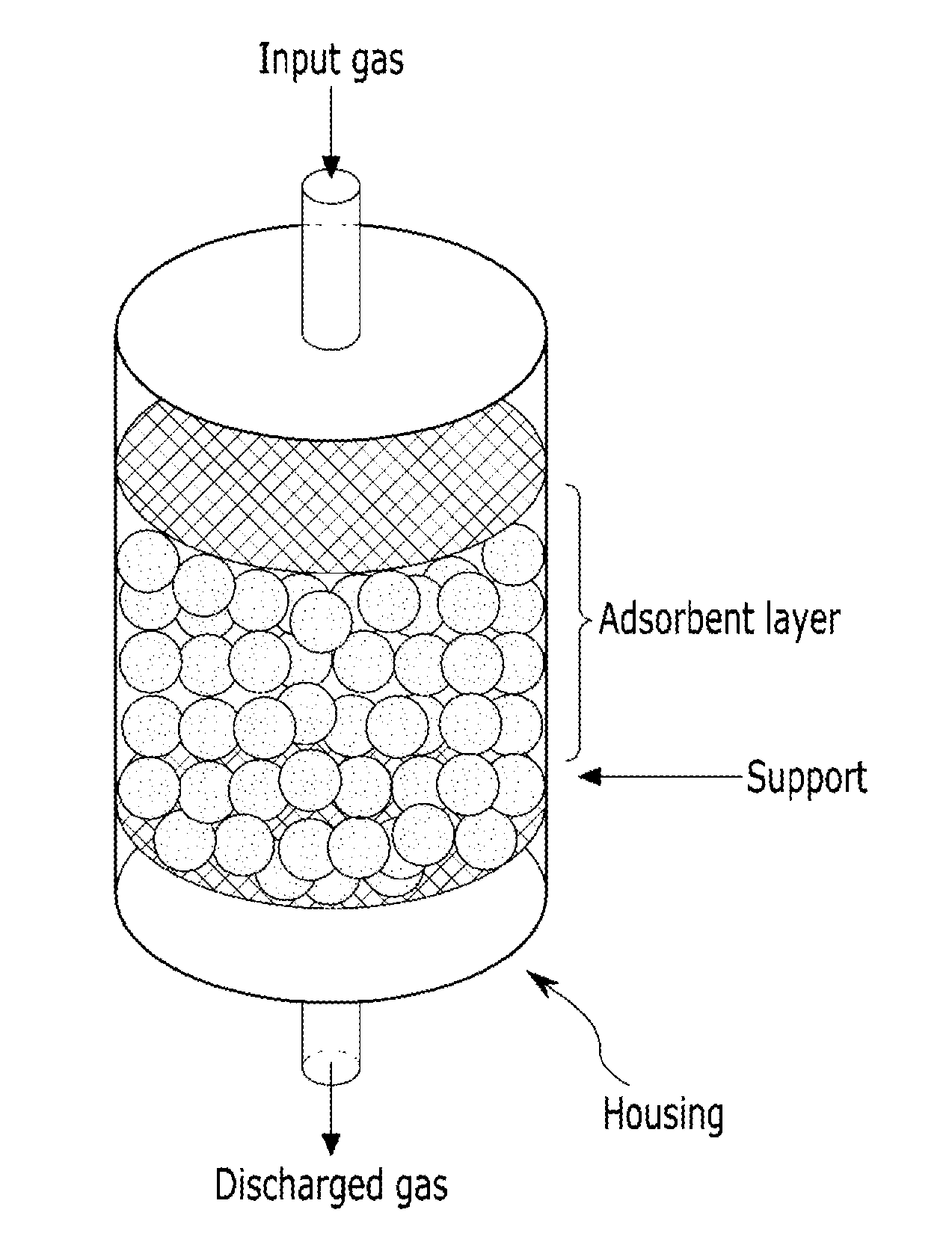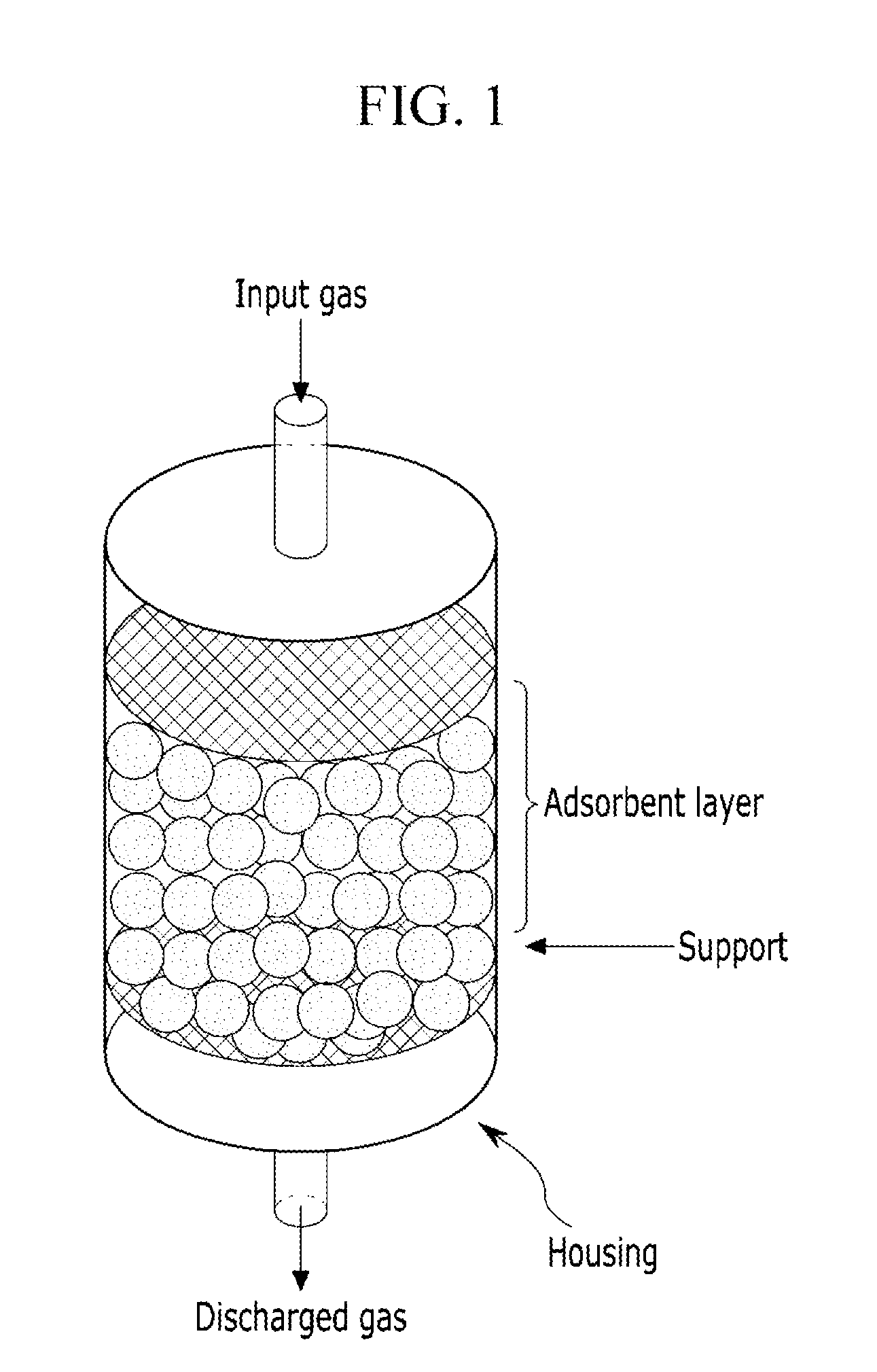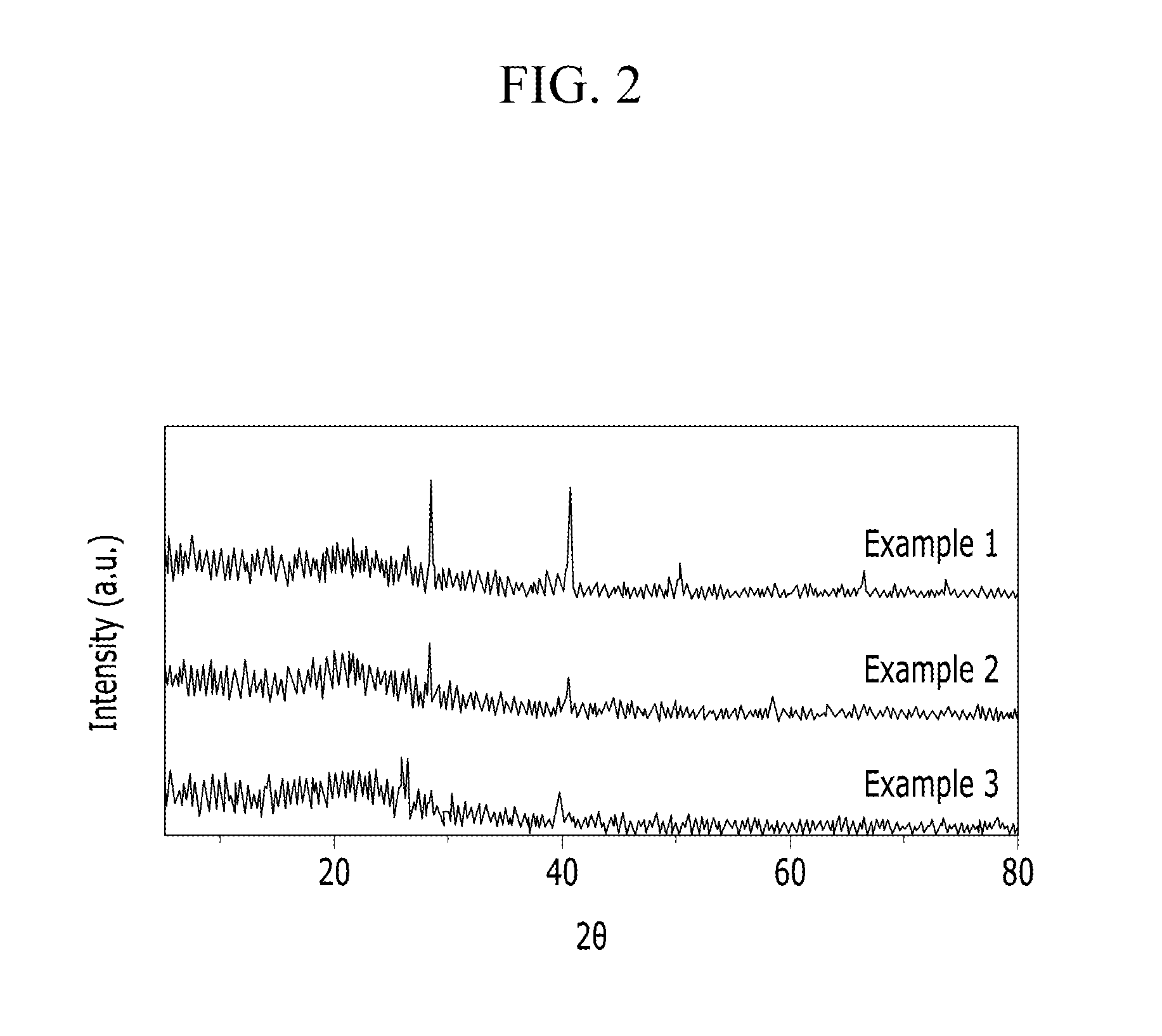Carbon dioxide adsorbents and production methods thereof, carbon dioxide capture modules including the same, and methods for separating carbon dioxide using the same
a technology of carbon dioxide and adsorbents, which is applied in the direction of dispersed particle separation, other chemical processes, separation processes, etc., can solve problems such as unsuitability for use, and achieve the effect of improving thermal durability and improving efficiency
- Summary
- Abstract
- Description
- Claims
- Application Information
AI Technical Summary
Benefits of technology
Problems solved by technology
Method used
Image
Examples
preparation example 1
Preparation of Carbon Dioxide Adsorbent Including P—KCl / SBA-15 (I)
[0081]About 60 ml of hydrochloric acid (HCl, 35%) is added to about 380 ml of water to prepare an acidic aqueous solution (pH=about 1 to 2). 10 g of (PEO)20(PPO)70(PEO)20 (wherein PEO is polyethylene oxide and PPO is polypropylene oxide) is added to the acidic aqueous solution as a surfactant to form micelles. To the resulting solution, 22 ml of tetraethyl orthosilicate is added to be hydrated, and then 14.6 g of KCl is added thereto. The resulting mixture is stirred at a temperature of 40° C. for about 2 hours to form a gel, and 13.6 g of KH2PO4 is added to the resulting gel and stirred for 2 hours. Then, the gel thus formed is aged at a temperature of 40° C. for 20 hours and at a temperature of 80° C. for about 20 hours, and dried at room temperature (about 25° C.) for three days. The dried gel containing KH2PO4 therein is calcined at 550° C. for 5 hours to obtain a carbon dioxide adsorbent including a mesoporous in...
preparation example 2
Preparation of Carbon Dioxide Adsorbent Including P—KCl / SBA-15 (II)
[0082]About 60 ml of hydrochloric acid (HCl, 35%) is added to about 380 ml of water to prepare an acidic aqueous solution (pH=about 1 to 2). 10 g of (PEO)20(PPO)70(PEO)20 (wherein PEO is polyethylene oxide and PPO is polypropylene oxide) is added to the acidic aqueous solution as a surfactant to form micelles. To the resulting solution, 22 ml of tetraethyl orthosilicate is added to be hydrated, and then 14.6 g of KCl is added thereto. The resulting mixture is stirred at a temperature of 40° C. for about 2 hours to form a gel, which is then aged at a temperature of 40° C. for 20 hours and at a temperature of 80° C. for about 20 hours, and dried at room temperature (about 25° C.) for three days. The dried gel is calcined at 550° C. for 5 hours.
[0083]The calcined product is added to a KH2PO4 aqueous solution (prepared by dissolving 13.6 g of KH2PO4 in 250 ml of water) and impregnated with the same while stirring. Then, ...
preparation example 3
Preparation of Carbon Dioxide Adsorbent Including P—KCl / SBA-15 (III)
[0084]A carbon dioxide adsorbent including a mesoporous inorganic oxide with KCl and phosphorous (P) being supported thereto (P—KCl / SBA-15) is prepared in the same manner as set forth in Preparation Example 2, except that the calcined product is added to a KH2PO4 aqueous solution and impregnated with the same while stirring, and is then subjected to a hydrothermal treatment at 120° C. for 20 hours before being separated.
PUM
| Property | Measurement | Unit |
|---|---|---|
| Temperature | aaaaa | aaaaa |
| Temperature | aaaaa | aaaaa |
| Temperature | aaaaa | aaaaa |
Abstract
Description
Claims
Application Information
 Login to View More
Login to View More - R&D
- Intellectual Property
- Life Sciences
- Materials
- Tech Scout
- Unparalleled Data Quality
- Higher Quality Content
- 60% Fewer Hallucinations
Browse by: Latest US Patents, China's latest patents, Technical Efficacy Thesaurus, Application Domain, Technology Topic, Popular Technical Reports.
© 2025 PatSnap. All rights reserved.Legal|Privacy policy|Modern Slavery Act Transparency Statement|Sitemap|About US| Contact US: help@patsnap.com



